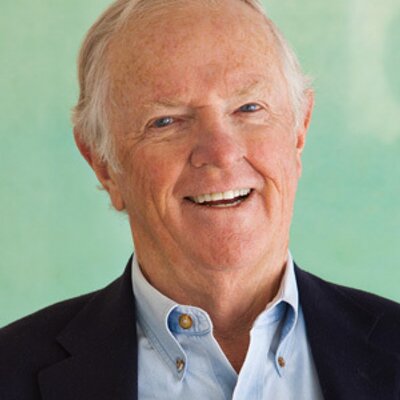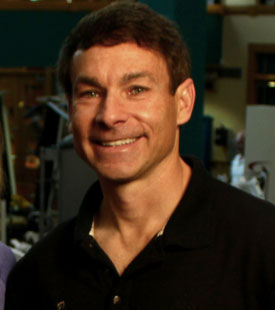
29 Aug Integrative Wellness Summit: Chris Crowley (+ Bill Fabrocini)
Chris Crowley is a featured speaker at Telluride First Foundation’s 2nd annual Summit on Integrative Wellness, presenting with clinician, coach, and teacher of movement and specialist in orthopedic physical therapy Bill Fabrocini. Other renowned speakers in the field of health and wellness are Dr. Deepak Chopra (streaming live on Sunday), Dr. David Agus, Dr. Marc Siegel, Dr. George Pratt, Dr. Alan Safdi, all focusing in their different ways on the subject of “Looking Forward, Aging Backward: Frontiers in Health, Wellness & Brain Science. “Singer-songwriter Jewel opens the weekend on Friday September 9. The event takes place at the Telluride Conference center in Mountain Village. Tickets here.
Please scroll down to the bottom of the story to listen to Chris Crowley’s podcast.

If you listen, you can’t miss the steady drip, drip, drip of information on the subject of aging. Why all the spilled ink? The good news is that more people are living longer these days. The bad? There is also an increase in cases of age-related mental decline.
However – cue the drums – the evidence is rolling in that validates the link between exercise and better mental capacity.
In one such study, the University of California, Los Angeles, and other credible institutions analyzed data produced by the Cardiovascular Health Study, which began in 1989 on about 6,000 men and women.
Scans showed that the top quartile of active individuals – keyword active – had substantially more gray matter compared with their peers and that the added material in the squash was located in the part of the brain associated with memory and higher level thinking. More gray matter, more neurons. That means more connections are being made, which is generally equated with greater overall brain health. What’s more, these initial findings show that people who had more gray matter correlated with physical activity also had 50 less risk of later experiencing memory decline.
For the purposes of brain health alone it looks like “move it or lose it.” And by “move it,” that particular study suggested a wide range of physical activities from walking to gardening, even ballroom dancing.
A theory which requires further investigation suggests that expending calories in any form remodels the brain by reducing inflammation and/or the incidence of vascular disease.
So does physical activity change the arc of aging?
Dr. John Medina, a developmental molecular biologist and author of “Brain Rules,” provides a rationale for why exercise is so important for mental function at any age. In an article published in “Cooking Light,” Medina suggested the link makes sense from an evolutionary standpoint because the constant activity as our ancestors hunted and gathered was key to our species’ brain development.
And still is.
And it may have something to do with a protein called BDNF or Brain-Derived Neurotropic Factor, which helps new brain cells form while keeping existing neurons younger. Medina described the protein as “close to a magic bullet as you can get.”
So does your birthday necessarily dictate how you look, act, and feel? Does your birthday tell the whole story about your physical health – or is there such as thing as a “fitness age.”
Let’s turn to Chris Crowley for answers.
Chris and his colleague Bill Fabrocini are featured presenters at Telluride First’s upcoming 2nd annual Telluride Integrative Wellness Summit. Their subject, “Younger Next Year,” (also the title of Chris’ New York Times best-seller) pays off the event theme perfectly: “Looking Forward, Aging Backwards: Frontiers of Health, Wellness and Brain Science.”
“Our basic thesis is that there is a revolution in aging, that it can make your life radically better and that it is mostly a matter of behavioral change which is within your own control. A welcome message and a strong one. The books have been out for ten years and have been handed out to an awful lot of patients by a lot of doctors. It may be a comfort to know that in all that ten years, we have received a ton of responses, none of it negative, except for a half dozen emails that thought it was ‘elitist,’ which may be true,” said Crowley.
In their talk, a kind of Rosencrantz/Guildenstern routine, Crowley and Fabrocini will elaborate upon the fact that if you work out pretty hard (that is, hard for you) six days a week for the rest of your life you will not only be fitter, you will also be more amusing, energetic, creative, sexier, and radically healthier. That was the claim of the original “Younger Next Year” and with the “Exercise” version of same, the facts have become even clearer: for one thing, the dreaded sarcopenia (muscle loss associated with aging, like 10 percent every decade) is not inevitable.
Are conditions like arthritis, back pain, loss of range of motion and flexibility inevitable? How about anxiety and depression associated with the aforementioned conditions? And cancer?
Bet you know the answer by now: no siree bob.
In fact, a study of 4000 senior Olympians with an average age of 68 showed a fitness age of 43.
“Although we were guessing we might see 15 years’ difference, we never would have through they’d shave a quarter of a century off their real age,” said Pamela Peeke, MD, MPH, also assistant clinical professor medicine, University of Maryland.
Lots of factors come into play when calculating the fitness age: weight; frequency and intensity of your exercise program; resting and maximum heart rates; and waistline measurement, but here’s an uplifting factoid from Crowley and Fabrocini’s based on their latest book. (And the facts remain true even if you are not an Olympian):
“If you make the behavioral changes he talks about, you can put off 70% of aging until the end of life. You can eliminate 50% of the serious illness and accidents all the others are going to have forever. Those are astonishing claims,” Chris says, “and absolutely true. In fact, they are conservative.”
In other words, it appears we have a choice: move and stay in our groove or remain passive and let aging happen.
Your move.
For more, listen to Chris Crowley’s podcast.
More about Chris Crowley:
Chris Crowley was born in Salem Massachusetts in 1934. He is a graduate of Exeter, Harvard College and the University of Virginia Law School where he was Articles Editor of the Law Review. Crowley spent his 25 year legal career at Davis Polk in New York City, the last 19 of them as a general litigation partner. Among the highlights, he led one side in the largest take-over fight until that time, led various front-page investigations, and brought (and successfully argued in the U.S. Supreme Court) a pro bono case to get and promote more African Americans on the New York City Police Department.
Chris retired young (56) because he “wanted to live more than one life.” He and his wife, the portrait artist Hilary Cooper, moved to Aspen where he lived the outdoor life, wrote and came up with the idea for the “Younger Next Year” books. They moved back to New York in 1998.
“Younger Next Year” – written with leading New York internist and Professor at Columbia Medical School, Henry S. Lodge M.D. – has sold over 2 million copies in 20 languages and continues to be something of a cult book for those over 40. He also wrote Thinner This Year, a nutrition book, with Tufts associate professor of nutrition and muscle physiology, Jen Sacheck Ph.D. The latest book in the series came out this January, Younger Next Year: The Exercise Program.
In recent years Chris has become a busy Keynote Speaker on “The Revolution in Aging” and “A Good Third Act.” He also leads “Younger Next Year Total Immersion Retreats” with Aspen Club owner Michael Fox in Aspen and other places. He is hard at work on additional books, including a novel (his favorite if least promising project). He and Hilary are avid skiers, bikers and single scullers. They live in Lakeville, Connecticut and New York City.
More about Bill Fabrocini:

Bill Fabrocini is a clinician, coach, and teacher of movement and a specialist in orthopedic physical therapy and sports performance therapy with a background neurophysiology.
He has built his career around rehabilitating athletes and designing innovative training programs striving to optimize human performance. Bill believes that everyone is an athlete designed to move. “We all share the same biology and are all governed by the same laws of physics.”
Bill’s approach is to enhance movement ability through training principles that take advantage of the natural architecture of the human body and its ability to adapt.
Bill utilizes his vast knowledge of the human body to coach his clients and teach others how to build durable, dynamic athletes of all walks of life. It is no wonder his client base is so diverse: professional and collegiate athletes and sports teams, Olympians, corporate executives, youth sport organizations, and many others come to him for his guidance and diverse approach to enhance performance, productivity, and quality of life.
Bill has worked in the medical and fitness industry for over three decades primarily in Aspen Colorado, where he is co-founder of Aspen Core Fitness, the company that produced the Rip Trainer and the educatonal programming that was acquired by fitness giant TRX.
In 2015, Bill founded the Aspen Sports Summit whose mission is to bring together the leaders in the world of sports medicine, fitness, and the medical industry to provide education for others while benefitting various philantropical causes making a difference in the world.
Fabrocini is creator of the exercise program featured in “Thinner This Year” by Chris Crowley and Jenniffer Sacheck Ph D. The book is the the sequel to the New York Times best-seller “Younger Next Year.” He also produced the accompanying DVD series that supplements the exercise portion of the book, “Thinner This Year: Preparation for Movement and The Sacred 25 and Beyond.”
And recently, “Younger Next Year: The Exercise Program.”
‘Your living age maybe 60 or 70 or 80, but you can have the biology of living tissue and quality of life function of a 40- or 50-year-old if you follow the concepts we teach in the book. By the way, visa versa is also true: you can be 40 or 50 and have the biology and living function of an 80-year-old, which we sadly see in America more and more. Same in terms of brain function.’’


Sorry, the comment form is closed at this time.